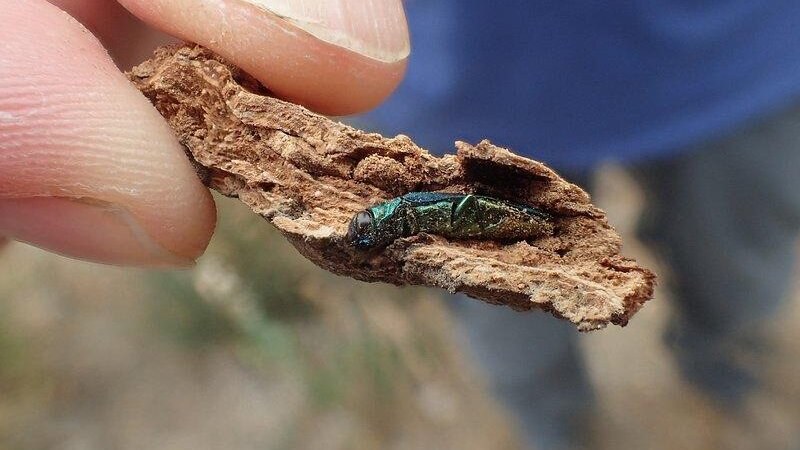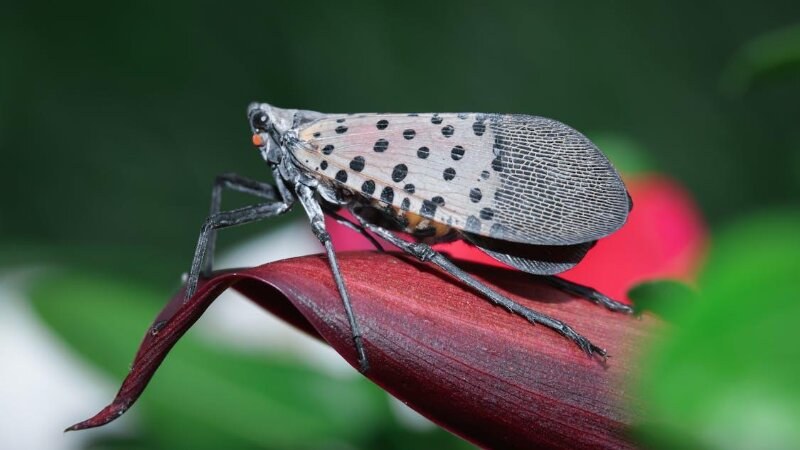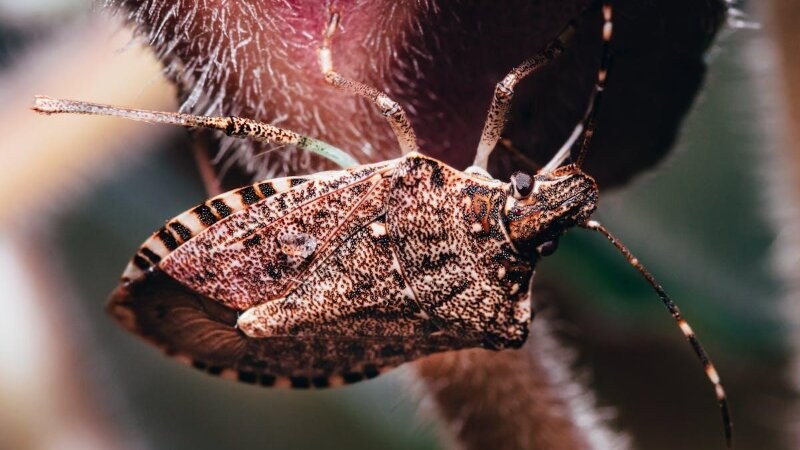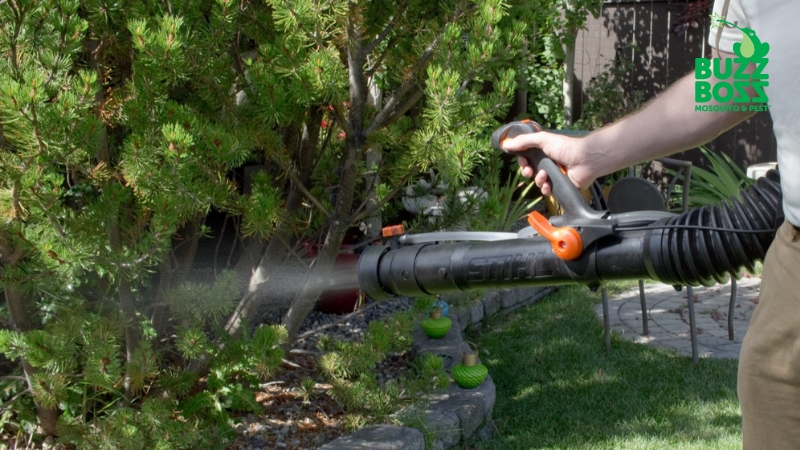10 Invasive Insects That Are a Threat to Western Canada
Reading time: 6 minutesWestern Canada's vast and diverse landscapes are home to an array of flora and fauna contributing to our unique ecosystem. However, this delicate balance is under constant threat from an unexpected enemy: invasive insects.
You cherish your yards for the serenity and natural beauty they add to your home. Unbeknownst to you, you could be under a stealthy siege by any one of the many invasive insects threatening urban forests and green spaces.
Read on to understand what you’re up against so you can protect your yard and nip the problem in the bud.
Common Invasive Pests in Western Canada
1. Emerald Ash Borer

The Emerald Ash Borer, a sleek green menace about half an inch long, has gained notoriety for its attacks on ash trees across Western Canada. This invasive pest burrows into the bark, disrupting the tree's ability to transport nutrients and water, effectively starving it to death.
Its spread is swift and devastating, propelled by the movement of infested wood materials. It leaves behind a trail of weakened and dying ash forests.
2. Asian Longhorned Beetle
With its glossy black body and distinctive white spots, the Asian Longhorned Beetle threatens a variety of hardwood trees, including maples and birches.
Adults can reach up to an inch and a half in size, and their larvae tunnel deep into the heartwood, creating extensive damage that can ultimately kill the tree. This beetle's preference for various hardwoods makes it a significant concern, as it can potentially transform your landscape into a ghost town of brittle timber.
3. Gypsy Moth (Spongy Moth)
The Gypsy Moth, or Spongy Moth, gives birth to caterpillars that feast voraciously on the leaves of hardwood trees.
Measuring up to 2.5 inches, these caterpillars have rows of blue and red dots, making them easily identifiable amidst their destructive dinner tables. Their defoliation can severely weaken trees, leaving them susceptible to other stresses and significantly impacting tree health.
4. Spotted Lanternfly

The Spotted Lanternfly is an eye-catching pest with its vibrant and distinct wing patterns. It primarily targets the tree of heaven but doesn’t shy away from a variety of native hardwoods and fruit trees.
This invader disrupts plant health by sucking sap and excreting sticky honeydew, which encourages mould growth and weakens the trees. It’s a double whammy affecting your trees as well as the ecosystem at large.
5. Hemlock Woolly Adelgid
Resembling tiny, cottony masses on hemlock branches, the Hemlock Woolly Adelgid is a tiny pest that can cause massive damage. It sucks sap from the base of needles, robbing hemlock trees of vital nutrients. This leads to needle loss, diminished health, and, eventually, the tree’s death. These pests reproduce rapidly in favourable conditions, leading to severe infestations that can quickly spread.
6. Brown Spruce Longhorn Beetle
This small, inconspicuous beetle, no more than an inch long, primarily goes after spruce trees. Its larvae bore into the wood, disrupting the tree’s vascular system and leading to decline and death over time.
Originating in Europe, it has found a new home in Canada, where it poses a growing threat to the spruce-dominated landscapes.
7. Mountain Pine Beetle
The Mountain Pine Beetle is another tiny but formidable foe native to Western Canada. In recent years, tales of its invasions have become common, attacking and killing lodgepole pine trees by the millions.
These beetles bore through the bark, lay their eggs, and introduce a deadly fungus that cuts off the tree’s nutrient and water supply, turning lush green forests into expanses of red, dead timber.
8. Japanese Beetle
The Japanese beetle is notorious for its voracious appetite, which includes over 300 plant species. This beetle damages plants by skeletonizing foliage, which means it eats the leaf material between the veins. It can also ruin your beautiful flower beds that you worked so hard to grow all spring.
Initially detected in Eastern Canada, this pest has been moving westward, threatening ornamental plants, crops, and urban green spaces in Western Canada.
9. Brown Marmorated Stink Bug

The Brown Marmorated Stink Bug, identifiable by its shield-shaped body and mottled brown colour, threatens fruit crops. It’s well-established in four provinces and damages the flesh and skin of fruits. It is also a nuisance in homes during colder months. Wondering what inspired its name? When disturbed, it releases a foul stench that may cause an allergic reaction in some people.
10. Sirex Woodwasp
The Sirex Woodwasp is a formidable parasite that likes to feast on various pine species in Canada. Females inject eggs into live trees along with a fungal symbiont that weakens and eventually kills the host tree. The parasite's impact is amplified as the fungi it introduces disrupt the tree's ability to transport water and nutrients, accelerating decline.
How to Keep Pests Out of Your Yard
Keeping invasive pests off your yard requires vigilance and a proactive approach. Here are some ways to prevent a hostile takeover of your yard:
- Book BuzzShield® Complete: When it comes to pests that can seriously damage your lawn, prevention is always better than cure. Tens of thousands of Canadian homes trust our BuzzShield® Complete package to protect them against insects, rodents, and wasps by creating an invisible barrier around their yards.
- Regular Monitoring: Look for early signs of infestation, such as unusual leaf damage, visible pests, or unhealthy plant growth.
- Yard Maintenance: This includes removing fallen leaves and debris where pests can breed and hide. Keep your lawn mowed, and prune bushes and trees regularly. Reduce the clutter in your yard to minimize breeding grounds and shelter for pests.
- Barriers and Repellents: Physical barriers, such as netting or row covers for gardens, can prevent pests from accessing your plants.
- Natural Predators: You can introduce natural predators of the invasive pests into your yard. For instance, ladybugs help control aphid populations, and certain nematodes are effective against soil-dwelling insect larvae.
- Pest-Repellent Plants: Integrate plants into your garden and landscaping that naturally repel insects. Herbs such as lavender, basil, mint, marigolds, and garlic are known to deter various pests.
- Proper Water Management: Eliminate standing water in your yard, which can serve as a breeding ground for mosquitoes and other pests. Keep gutters clean, birdbaths refreshed, and plant saucers dry to disrupt the life cycle of water-dependent pests.
- Encourage Biodiversity: Increasing the diversity of your garden can help create a more balanced ecosystem. Planting different shrubs can attract beneficial insects and predators that naturally control pest populations. Biodiversity also stops the spread of pests that prefer specific hosts.

Tell the Invaders to Buzz Off with Buzz Boss
Are you ready to put up an iron-clad defence against those uninvited guests munching through your beloved greenery? Buzz Boss offers specialized Pest Exclusion services designed to protect your home against these persistent pests proactively.
Don’t wait for the invaders to settle in; get a free estimate today and turn your yard into a fortress with Buzz Boss's expert help. Our pest control solutions are eco-friendly, safe, 100% guaranteed, and bee-friendly!
We serve Calgary, Edmonton, Red Deer, Regina, Saskatoon, Winnipeg, and Okanagan.

